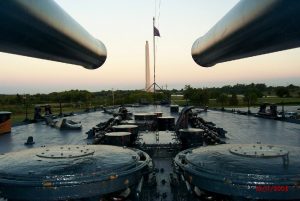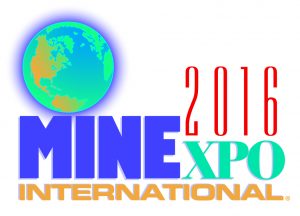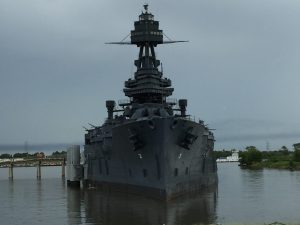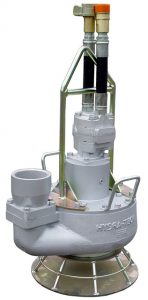Hydra-Tech Pumps uses serial numbers as a way to identify which pump or power unit our customers have purchased. It allows us to track the year or specific custom parts that may be used on the units and also as a means for finding compatible parts. All of the equipment is supplied with a serial identification tag at the time of fabrication. This identifier will help with any questions or issues that may arise and also used for quality control, service management and sometimes even theft. Anything that we custom build or if we use a non-standard part on your pump or power unit will be noted in our system before it is shipped.
Now that we know why we have serial numbers let’s talk about where you can find it on your particular system. On our smaller pumps which includes all 2 inch and 3 inch pump models, the serial number is stamped on the side of the top cover. On our larger pumps which includes 4 inch pumps and larger, look for a metal tag mounted on the top of the top cover on the pump. As for the power units, the open power units have the serial number tag mounted on the lifting bracket. The serial number on the closed power units, also called the Quiet Pak is located in the door of the unit.
The system used for the serial numbers are different for the pumps and power units. The pumps will start with a number and then have a letter and followed up with three more numbers. On the power units the serial number will start with a letter followed by four numbers. The other information you will see on the tag are the model number, the kilowatts and the weight of the unit.
If you have additional questions about serial numbers, feel free to call us at 570-645-3779 or email to htpump@hydra-tech.com
Hydra-Tech Pumps manufactures an extensive line of Hydraulically Driven Submersible Pumps and Gas, Diesel and Electric Hydraulic Power Units. We stock many of the smaller pumps and enough parts for our bigger pumps that we can typically get them assembled in a reasonable amount of time. We typically have a few of the more popular small (20hp and smaller) power units in stock and ready to ship.
For those who might not know, Hydra-Tech Pumps prides itself on our ability to meet customer needs through both the adaptation of existing products as well as the development of new products to suit everything from a one-off project to an OEM development project. Because of our in house design and manufacturing capabilities Hydra-Tech Pumps is able to control everything about your pump / power unit build from the paint color to the choice of hydraulic motor and engine.
Need a slight “tweak” for the pump you are ordering? Lose the strainer, get the pump without pigtails, add a flow control to protect the pump when running it with a larger power unit, and get a different motor based on your power setup. How about a custom color?
And for your power unit. Want a remote shut down kit? Need a twin circuit? Whose control panel do you prefer? Have a particular engine that you prefer over the engines we typically use? Let us know. Is Tier 4 Final a concern? We have solutions. Want your power unit painted in your company colors? How about a coolant gauge or shutdown switch? Need something bigger than a 200hp power unit? Let us know – we have built power units bigger than what we show in our catalog and online. This is true as well in Electric Hydraulic Power Units where we have built units up to 400hp. Do you need an electric power unit that is explosion proof? We can do that too.
Whether you need a little bit of customization or something exclusive to your requirements Hydra-Tech Pumps is ready willing and able to build it for you!
At Hydra-Tech, one of our specialties is helping our customer choose the correct pump and/or power unit. We recognize that choosing the right pump for your situation is a very important decision, and that using the wrong pump can cause frustration and prevent the job from being accomplished in a timely manner. For these reasons it is important for you to consider several factors before you turn to us for your hydraulically driven submersible pump and hydraulic power unit needs.
Some of the factors to consider are the following:
- The type of hydraulically driven pumps available-Solids handling, General purpose, Axial mixed flow, Sand and slurry, Slim line, Shredders, Centrifugal screw, High performance pumps with high heads or high volumes and each type serves a specific purpose. For example, axial mixed flow pumps are ideal for moving large volumes of fluid at a relative low head, while the centrifugal screw pump is ideal for pumping high viscosity liquids such as crude oil, latex, and molasses type materials.
- There are three main factors when selecting a pump; the total head of discharge, what your desired flow rate is at that head, and the characteristics of the pumpage you’re pushing. If you know this information you will be able to narrow the pump down to the right one for the job!
- When selecting a hydraulic power unit, you can choose from one of our standard power units which include electrical motor, gasoline engine, propane or natural gas engines, diesel engines or you can use the hydraulic power you may have such as a skid-steer, excavator, and tractor.
NOTE: The hydraulic power unit-Is totally customizable we’ll listen to what your requirements are and design and manufacture to your specific needs.
Customer Focused
A 40 year tradition of listening to what the customer wants to accomplish and then applying our engineering and manufacturing skills to meet those requirements. Whether it’s a catalog or custom product, we promise to do the work up front to make sure that the product we deliver exceeds customer expectations. After the sale, we offer product support at a world class level.
The U.S. Navy commissioned USS Texas on March 12, 1914. She was the most powerful weapon in the world, a complex product of an industrial nation emerging as a force in global events. In 1916, USS Texas became the first U.S. battleship to mount anti-aircraft guns. She was also the first to control gunfire with directors and range-keepers. These early computers increased firing accuracy.
In World War I, USS Texas joined the 6th Battle Squadron of the British Grand Fleet early in 1918. Her duties included laying a North Sea mine barrage, responding to German High Seas Fleet maneuvers, and helping prevent enemy naval forces from cutting off Allied supply lines.
Late in 1918, she escorted the German Fleet to its surrender anchorage.
In 1925, the Navy opted to modernize USS Texas instead of scrapping her. This meant converting the ship to run on fuel oil instead of coal. Tripod masts and a single stack replaced the ship’s cage masts and two smoke stacks. Torpedo blisters added another layer of protection to the ship’s waterline.
USS Texas received one of the first radars in the U.S. Navy in 1939. With new anti-aircraft guns, fire control and communication equipment, the ship remained an aging but powerful asset in the U.S. naval fleet.
USS Texas became flagship of the U.S. Atlantic Fleet before World War II. She had a close call in 1941 while on “Neutrality Patrol.” German Submarine U-203 had the ship in its sights and asked permission to fire. Adolf Hitler eventually denied permission to engage the ship, or any other U.S. ship.
U.S. Atlantic Fleet before World War II. She had a close call in 1941 while on “Neutrality Patrol.” German Submarine U-203 had the ship in its sights and asked permission to fire. Adolf Hitler eventually denied permission to engage the ship, or any other U.S. ship.
During World War II, USS Texas fired on Nazi defenses in Normandy on D-Day, June 6, 1944.
Shortly afterward, German coastal defense artillery near Cherbourg hit the ship twice. The first shell exploded, injuring 12 and killing one. This was the only combat fatality ever aboard USS Texas. The second shell hit the ship, but did not explode. The Navy deactivated this “lucky shell” and returned it to the ship as a good luck charm. After repairs, the battleship shelled Nazi positions in Southern France before transferring to the Pacific. There she lent gunfire support and anti-aircraft fire to the landings on Iwo Jima and Okinawa.
After Japan’s surrender, USS Texas carried soldiers stationed across the Pacific home from war.
When she completed her final mission, the state of Texas acquired the ship. On April 21, 1948, Battleship Texas was decommissioned, and became a memorial ship.
Today, Battleship Texas is a floating museum and the last remaining U.S. battleship of her kind. Of the eight American battleships open for public display, she is the only one that served in both World Wars and stands as a memorial to the bravery and sacrifice of the servicemen who fought in both World Wars.
The battleship is both a National Historic Landmark and a National Mechanical Engineering Landmark. Ensuring her future will require a concerted effort from Texas citizens and businesses. Luck has gotten her this far, but now it’s up to citizens to save Battleship Texas.
Our Connection to the Battleship Texas…
 On June 14, 2012, T&T Marine Salvage was contacted and provided an in-water survey and made temporary hull repairs in response to uncontrolled flooding onboard the USS Texas. On June 18, 2012, T&T was again requested to provide additional commercial diving, marine salvage and pollution response services to include continued underwater hull damage surveys, internal tank entries with commercial divers, dewatering of flooded tanks, opening of hatches for inspection, environmental response operations, and additional temporary repairs of the damaged hull. To support these expanded operations, T&T Marine Salvage also provided a Salvage Master, Project Manager and Safety Officer, as needed, throughout the duration of the project. Salvage services included, but were not limited to, submersible hydraulic pumping operations, temporary hull repairs, safety officer oversight, and naval architectural services.
On June 14, 2012, T&T Marine Salvage was contacted and provided an in-water survey and made temporary hull repairs in response to uncontrolled flooding onboard the USS Texas. On June 18, 2012, T&T was again requested to provide additional commercial diving, marine salvage and pollution response services to include continued underwater hull damage surveys, internal tank entries with commercial divers, dewatering of flooded tanks, opening of hatches for inspection, environmental response operations, and additional temporary repairs of the damaged hull. To support these expanded operations, T&T Marine Salvage also provided a Salvage Master, Project Manager and Safety Officer, as needed, throughout the duration of the project. Salvage services included, but were not limited to, submersible hydraulic pumping operations, temporary hull repairs, safety officer oversight, and naval architectural services.
After nearly two months the T&T and USS Texas Crews sealed as many leaks as possible and dewatered the spaces using portable hydraulic pumps. The salvage crew accessed a large number of void spaces to determine if they had been affected including the blisters which had been installed in 1925 to protect the hull against torpedoes.
A plan was developed to place pumps onboard the USS Texas that would remain after the salvage crew was demobilized. T&T installed several pumps in strategic locations as a precaution for further water ingress. The pumps included two Hydra-Tech portable hydraulic submersible pump systems that were placed on board in case of an emergency. These systems were chosen due to their lightweight and ease of installation in various tanks as needed. The S3TC portable three inch pump and HT11DXR portable hydraulic power unit have been used by T&T for many years on smaller salvage projects. The proven reliability and durability of these systems were one of the reasons they were chosen for this project.
To lea rn more about the Battleship Texas please visit http://tpwd.texas.gov/state-parks/battleship-texas. For an interesting video of the structural repairs and dry berth project please go to https://www.youtube.com/watch?v=OYJwhCyPUls.
rn more about the Battleship Texas please visit http://tpwd.texas.gov/state-parks/battleship-texas. For an interesting video of the structural repairs and dry berth project please go to https://www.youtube.com/watch?v=OYJwhCyPUls.
To learn more about T & T Marine Salvage and their impressive operations and capabilities, check out their website at www.teichmangroup.com.
To learn more about Hydra-Tech Pumps and their hydraulically driven submersible pumps and hydraulic power units, please visit their website at www.hydra-tech.com.
We appreciate the significant help on this piece provided by Kevin Teichman of T & T Marine Salvage and the Texas Parks & Wildlife / Battleship Texas Historical Site.
 In just 2 weeks, Hydra-Tech Pumps will be headed to Las Vegas, Nevada for the 2016 MINExpo Trade Show. The event is held both inside and outside of the Las Vegas Convention Center and runs from Monday September 26th to Wednesday September 28th. You can find more information at www.minexpo.com.
In just 2 weeks, Hydra-Tech Pumps will be headed to Las Vegas, Nevada for the 2016 MINExpo Trade Show. The event is held both inside and outside of the Las Vegas Convention Center and runs from Monday September 26th to Wednesday September 28th. You can find more information at www.minexpo.com.
The theme for the show this year is “MINExpo 2016 is all about solutions.” This is similar to the statement Hydra-Tech uses on its catalog “The World Pumps US for Solutions”. Ultimately, that is what all sales are about no matter the industry, someone has a problem or requirement for which they are looking for a solution. We will be there for those visitors who have a challenging dewatering requirement but aren’t sure what kind of pump they need. High head application? Corrosive or slurry-like pumpage? Need a dewatering pump specifically for Phosphate mining? We want your tough applications so we can provide an effective solution with our pumps.
At the same time, we look forward to seeing existing customers who will be attending the show. We love to see the people who use our equipment on a daily basis and get feedback on our pumps – the good and the “needs improvement” kind. The only way we get better is through a willingness to listen to both the compliments and the criticisms.
Finally, the trade show is a way to make sure we are up to speed on an industry, in this case, mining. Although mining in the United States is down, the day to day needs of the global marketplace continues to create greater demand for the metals, minerals and energy that come out of the Earth.
So if you are reading this, and you are heading to Las Vegas for the MINExpo, please stop and see us at Booth 27029 in the South Hall!
Pumped Up for Football?
The prime week of a new season of professional football means all team hold hopes for the NFL Championship. Everyone likes to think they can predict the future and we at Hydra-Tech Pumps will join that crowd and offer a few observations and our best predictions for division winners, playoff teams and the ultimate champion.
Surprise Team of the Year – Tennessee Titans, Runner Up Tampa Bay Bucs
Disappointments of the Year – Oakland Raiders, Runner Up – Buffalo Bills.
AFC East: The Jets and Dolphins pump some excitement in to the division race as they make headway in the annual quest to overcome New England’s dominance. The Bills disappoint early and often, Rex Ryan hears the boos and is the first coach flushed. In the end, and in honor of a great Patriot fan, Laurie Auger from BJM pumps, we are predicting one more divisional championship for the Patriots.
AFC North: With many new faces, the Steelers defense needs to quickly move up the performance curve to balance the force that will be Ben Roethlisberger and the offense; Cleveland’s rebirth will not overcome the centrifugal force caused by years of poor personnel moves and that mean three wins at best; Under the negative pressure of relying on youth and aging veterans, the Ravens will make an early push before cavitating down the stretch and fall from the playoffs. With one of the best rosters in the league, the Cincinnati Bengals will overcome some early head pressure and capture this division.
AFC South: Mining a diamond out of this slurry of mediocrity — the Texans, Jaguars, Colts and Titans– is not easy…The Texans fail with the overmatched Brock Osweiler; the underachieving Jags and Gus Bradley fail to meet the duty point and Andrew Luck may not pass solidly through week 3 if his offensive line continues to perform like a leaky suction hose. Powered by a dynamic two headed run game and some added lift from Marcus Mariota the Titans and their dynamic defensive front the go from worst to first and make the playoffs.
AFC West: We will bypass on the resurgence of the Raiders. The lack of skill position talent and depth means 8-8. As solid as they have been in recent years on defense, Chiefs front will struggle to push the pocket and the offense will not win shootouts. The Chargers, recirculating for one more year in San Diego will improve on both sides of the ball and surprise many by finishing second to the defending champion Broncos…a team whose defense will help maximize the performance curve of an average offense.
AFC Winners: Patriots, Bengals, Titans and Broncos
AFC Wild Cards: Pittsburgh and NY Jets
AFC Title Game: Pittsburgh and Bengals (yes they will finally win a Playoff game).
AFC Champion – Pittsburgh
NFC East: With a weak offensive line, the Giants will need to count on a repaired defense and big plays from Eli and Odell, it won’t be enough as they struggle to keep Manning upright. The favored Redskins filled holes on their defense, but the O-Line may struggle. While their defense will be surprisingly strong, Dallas with no Romo is like a pump without an impeller… It just doesn’t work. Putting Carson Wentz behind a poor offensive line may doom the future of the franchise and certainly keep the Eagles at the bottom half of division.
NFC North: Maybe not any team’s division to win, but it will be competitive top to bottom as the lions build on last year’s late success, the Bears improve on defense and at Soldier Field and the Packers and Vikings fight it out for the top spot. In the end, Aaron Rogers while still in his prime, Eddie Lacy and a strong group of receivers overcome Adrian Petersen’s big year and the stout Minnesota defense to propel the Packers to the top of the division.
NFC South: The offensive arsenals of all four teams will make the games exciting. But with the Saints and Falcons both trying to rebuild on the defensive side and Tampa Bay running with a new head coach, the class of this division is clearly the Carolina Panthers led by Cam “MVP” Newton.
NFC West: Some like Seattle some Arizona and no-one gives San Francisco or the Rams much of a chance. We have to agree. The 49ers need players and the Rams need coaching and front office reboots. The Seahawks will dredge up enough offense to dominate at home and do enough on the road to secure a Wild Card, but the Cardinals roster strength will carry them to more road wins and the division title.
NFC Winners: Redskins, Packers, Panthers and Cardinals
NFC Wild Cards: Seahawks and Vikings
NFC Title Game: Panthers and Cardinals
NFC Champion: Cardinals
Championship Game: In a rematch from 2009, the outcome is reversed as the Cardinals deadhead the Steelers 42-27.
Hydra-Tech’s S4VHL, four inch hydraulic submersible sludge/slurry pump offers three inch solids handling and head capabilities up to 210 feet. This heavy-duty slurry pump is designed to handle wastewater and sewage and will fit through a 20” diameter manhole. The primary uses for this pump are sewer by-pass into force mains and general transfer of solids laden fluids. Combined with our HT25 to HT60 power units, the S4VHL is capable of flows up to 750 GPM. This safe and variable speed hydraulic drive submersible pump can be used where electric power is hazardous or impractical.
Example of how this pump is being used.
Problem: Treatment plant in a large southern municipality, pumping out of the on-site clarifier using hydraulically driven slurry gate pumps. Pumps would frequently clog with rags, diapers or stringy materials causing the need to pull the pump out and clean it as often as 1-2 times per day.
Solution: The national equipment rental company servicing the job-site suggested installing a Hydra-Tech Pumps’ vortex impeller S4VHL hydraulically driven submersible pump. The municipality agreed to a side by side test in the same clarifier. Over the course of several days, the slurry gate pump had to be pulled and cleaned six times while the S4VHL pump with the stainless steel vortex impeller did not stop working.*
Result: This municipality liked the S4VHL pump so much they are budgeting for the purchase of their own system.
*The superior performance by the vortex impeller can be attributed to the nature of vortex flow pumping. Unlike channel impeller pumping where the pumpage comes in full and direct contact with the vanes on the impeller the pumping action in a vortex pump takes place mainly in front of the impeller. So, stringy materials, semi solids and other debris are balled up in front of the impeller and ejected from the pump.
In the Pump Industry, a common cause of pump downtime is mechanical seal failure. In order to avoid having that phone call about a blown seal from our customers, Hydra-Tech Pumps is always trying to improve and upgrade our products. One particular pump we have improved is the 6 inch hydraulically driven submersible trash pump, by making a few minor changes. The first change is replacing the current mechanical seal with a newly designed and better performing mechanical seal which provides both superior materials of construction and is cost efficient. The look of this seal is completely different. The open springs have been eliminated so items such as wire ties won’t get held up, which ultimately could lock up the rotating section of the seal and create a failure.
This seal is made up of silicon carbide with Viton elastomers and stainless steel making it resistant to certain chemicals. Along with the mechanical seal improvement there are additional changes to the pump. The oil housing will be designed with kick out veins which will help keep the pumpage and solids from building up around the mechanical seal area. There will also be a pin installed in the oil housing to hold the stationary seal from rotating, which then allows the bellow seal to be pushed completely down onto the impeller. P80 rubber lube is used when assembling the seal. Each seal comes with set screws to hold it in place.
Sometimes when you hear upgrade or improvement you see dollar signs. That is not the case here. This upgraded seal will remain the same cost as the old seals but adds so much more to your 6” pump. Hydra-Tech understands the customers’ concerns and always pushes to find a better way.
Please see our other post http://hydra-tech.com/what-happened-to-my-motor-lip-seal/ to find out what can cause seal failure.
http://conta.cc/2ar2l4V
Most people are familiar with friction loss and velocity requirements when it comes to pump discharge lines and the impact these factors have on overall system performance. In the world of hydraulic power packs, hydraulic tools and hydraulically driven submersible pumps, the same factors must be considered to insure that enough energy is being efficiently transferred through the power unit and on down to the hydraulic motor powering the tool or submersible pump.
Each size of hydraulic hose has limitations when it comes to how much flow can be pushed through the Inside Diameter (ID) without adversely affecting both working pressure on the input side and back pressure on the return side of the system. So, choosing the right diameter hose is critical for eliminating inefficiencies which result in heat generation and excess back pressure in the motor.
The general rule for velocity in a pressure line is 10-20 feet per second and on the return side it should be between five and ten feet per second. The use of different ID hoses will alter this velocity, and the right size hose will insure that your system runs efficiently. This can be the case whether you are running 50 feet or 500 feet of hydraulic line out to the tool or submersed pump. The link below provides an industry standard reference to hose selection as it relates to velocity.
http://www.hydraulichose-fittings.com/images/hose-flow-velocity-chart.jpg
As mentioned above, the size and length of the hose run could also create an adverse impact on both the high pressure fluid delivery and the system back pressure. In fact, the hose size can have a greater effect on the tool performance even if the velocity of the fluid is within range.
For example, if a power unit is outputting 8gpm at 2500psi and you are using ½” (-8) hydraulic hose for delivery, the pressure loss across a 50 foot run is 33psi and the velocity of the fluid is 13f/s (ideal). If you add hose to a length of 150 feet the psi loss jumps to 99psi while the velocity remains the same. And, if the one way hose length increases to 300 feet, the pressure loss jumps to 300psi with the same 13f/s velocity. So at 300 feet out, the system pressure drops by over ten percent and the added friction also builds harmful heat which will eventually damage the critical hydraulic components as the oil quality degrades. And of course the performance of the tool or pump will drop off by at least the same percentage.
Not using the right size hose on the return side does not result in a pressure loss, rather it creates a pressure build. This increase in back pressure, when not controlled, can lead to failure of the lip seal in the hydraulic motor which can lead to mechanical seal failure and possibly a loss of system hydraulic oil in to the material being pumped. Before providing some sample numbers, consider that any lip seal in a hydraulic motor is typically rated for 100psi. With that in mind, using the same inputs as above (8gpm at 2500psi), and the same starting length of 50 feet of ½”ID hose, the system back pressure would be 33 psi at 13 f/s (the system pressure of 2500psi has already been expended doing the work). Moving to 150 feet of return hose jumps the back pressure to 99psi or the limit of most lip seals, and a 300 foot hose run results in back pressure of nearly 200psi.
In both cases above, up-sizing the hydraulic hose one size to 5/8” (-10) has a dramatically positive effect on system pressures. On the input side, the pressure loss of 300psi drops down to 67psi and on the return side, the back pressure drops to the same 67psi. These new pressures realized are dramatically better and will help insure that your system runs more efficiently.
The other thing to consider as you set up the hydraulic lines is the number of quick disconnects or other connections across the length of the run. It is always better to have fewer connections as each junction creates friction which impacts both delivery and back pressure.
Taking the time to think about the hoses and making sure to choose the right hose will go a long way towards insuring that your hydraulic system runs efficient and trouble free.


